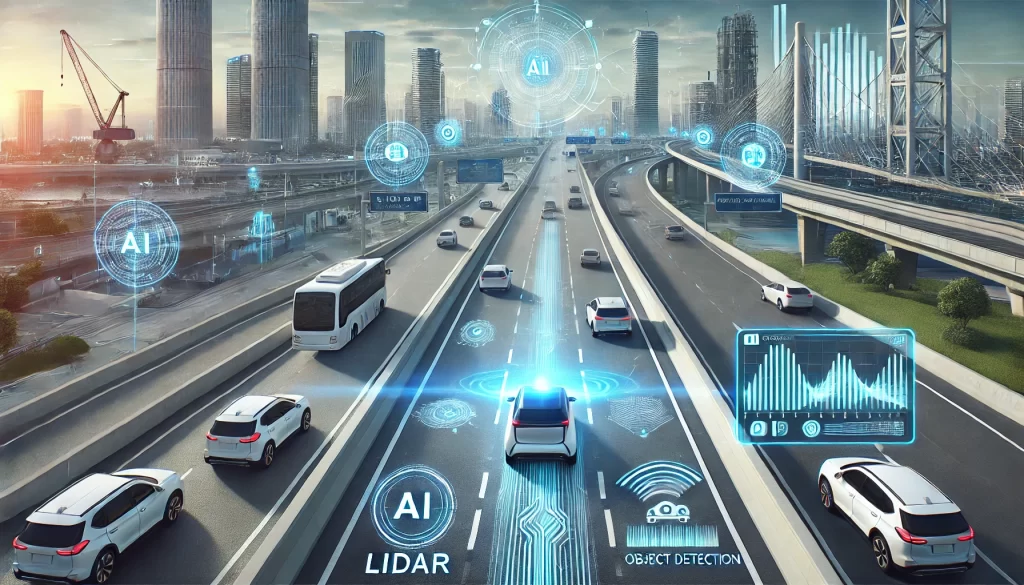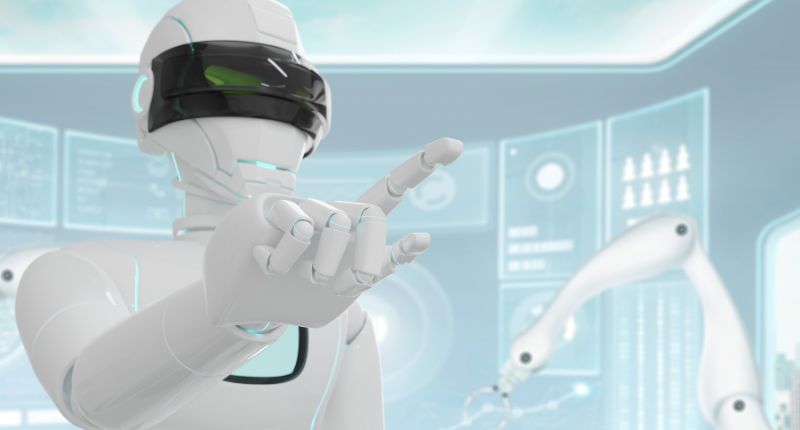The Role of AI in Autonomous Vehicles
The automotive industry is undergoing a massive transformation with the introduction of artificial intelligence (AI) in autonomous vehicles. AI plays a crucial role in enabling self-driving cars to perceive their surroundings, make decisions, and navigate safely without human intervention. From machine learning algorithms to real-time data processing, AI is the backbone of autonomous driving technology.
In this article, we will explore the role of AI in autonomous vehicles, its impact on road safety, the challenges it faces, and what the future holds for self-driving technology.
How AI Powers Autonomous Vehicles
AI enables self-driving cars to interpret and respond to their environment using a combination of advanced technologies. Here’s how AI functions within autonomous vehicles:
1. Perception and Sensor Fusion
Autonomous vehicles rely on a variety of sensors to perceive their surroundings. These include:
- LiDAR (Light Detection and Ranging): Creates a 3D map of the environment.
- Cameras: Capture images and recognize objects, road signs, and traffic signals.
- Radar: Detects the distance and speed of surrounding objects.
- Ultrasonic Sensors: Help with close-range detection, especially for parking assistance.
AI processes and integrates data from these sensors through sensor fusion, enabling the vehicle to construct a real-time map of its environment.
2. Decision-Making with AI Algorithms
Self-driving cars utilize AI-driven decision-making systems to analyze traffic conditions and take appropriate actions. These include:
- Deep Learning Algorithms: Used for image recognition, allowing cars to detect pedestrians, cyclists, and other vehicles.
- Reinforcement Learning: AI learns from past driving experiences to improve decision-making.
- Predictive Analytics: AI anticipates potential obstacles and hazards to enhance safety.
3. Path Planning and Navigation
Autonomous vehicles must determine the safest and most efficient route. AI-powered navigation includes:
- GPS and Mapping: AI continuously updates the vehicle’s position using GPS and high-definition maps.
- Dynamic Route Planning: AI adjusts routes based on real-time traffic conditions.
- Collision Avoidance: AI detects possible collisions and takes corrective actions, such as braking or changing lanes.
Levels of Autonomous Driving
The Society of Automotive Engineers (SAE) defines six levels of vehicle automation, from Level 0 (no automation) to Level 5 (full automation):
1. Level 0 (No Automation)
- Human drivers handle all driving tasks.
2. Level 1 (Driver Assistance)
- AI provides features like adaptive cruise control and lane-keeping assistance.
3. Level 2 (Partial Automation)
- AI controls steering and acceleration, but human supervision is required.
4. Level 3 (Conditional Automation)
- The vehicle can handle most driving tasks, but human intervention is needed in certain situations.
5. Level 4 (High Automation)
- AI can fully control the vehicle in designated areas (e.g., urban settings).
6. Level 5 (Full Automation)
- No human intervention is required, and the car can operate in all conditions.
Currently, most self-driving cars operate at Level 2 or Level 3, while Level 4 and Level 5 technologies are still in development.
Challenges in AI-Driven Autonomous Vehicles
Despite advancements, self-driving cars still face significant challenges:
1. Safety and Reliability
AI must ensure 100% accuracy in decision-making to prevent accidents.
2. Ethical Dilemmas
AI faces challenges in moral decision-making, such as determining who to protect in unavoidable accidents.
3. Cybersecurity Risks
Autonomous vehicles are vulnerable to hacking and cyber threats, requiring robust security protocols.
4. Legal and Regulatory Barriers
Governments worldwide are still developing laws and regulations for self-driving vehicles.
🔗 Learn more about autonomous vehicle regulations
The Future of AI in Autonomous Vehicles
AI-driven autonomous vehicles are set to revolutionize transportation. Here’s what we can expect:
1. Improved AI Training with Simulated Environments
Self-driving cars will be trained in virtual environments, allowing AI to learn from millions of driving scenarios.
2. Enhanced Vehicle-to-Everything (V2X) Communication
AI will enable real-time communication between vehicles, infrastructure, and pedestrians for improved road safety.
3. Integration with Smart Cities
AI-powered vehicles will become an integral part of smart cities, optimizing traffic flow and reducing congestion.
4. Sustainable and Electric Autonomous Vehicles
AI will enhance energy efficiency by optimizing driving behavior and reducing emissions.
Conclusion
AI is at the core of the autonomous vehicle revolution, enabling safer, more efficient, and intelligent transportation systems. With advancements in machine learning, deep learning, and sensor technologies, AI-powered self-driving cars are on the brink of transforming mobility as we know it.
While challenges remain, continuous innovation and regulatory support will pave the way for fully autonomous vehicles in the future. As AI technology progresses, we move closer to a world where self-driving cars become a common reality, enhancing safety and convenience for all.


